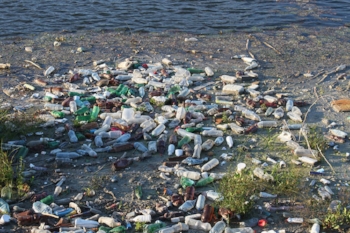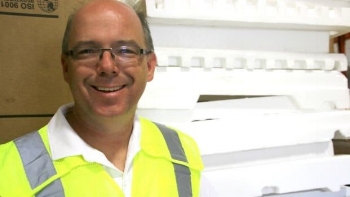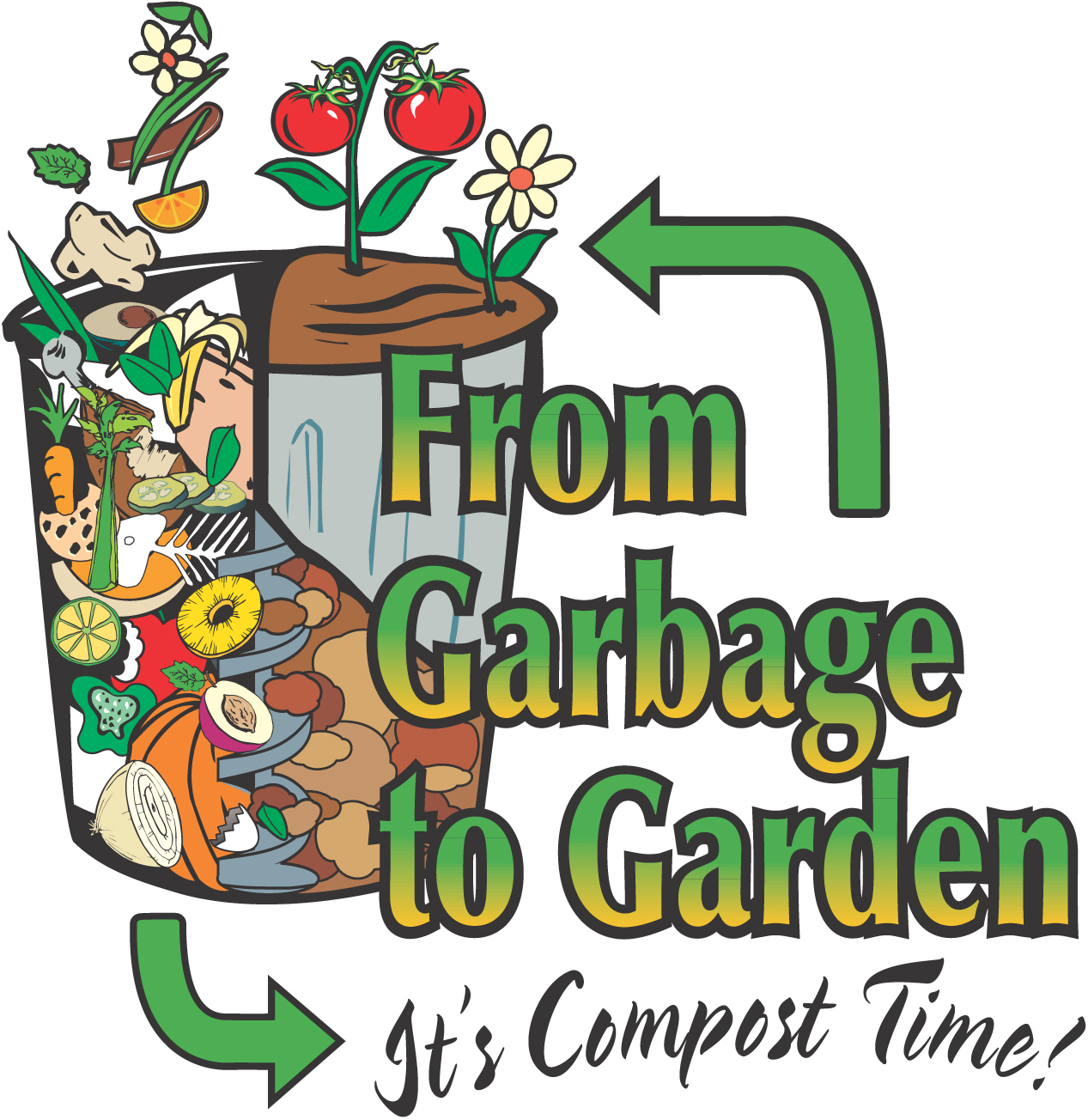Submitted by Bob Bott
In 2014, I was one of the last beneficiaries of Green Calgary’s “Healthy Home” inspection program that had run for about six years with support from the City. The non-profit then had to stop making individual home visits due to changes in their funding and organization. However, Green Calgary continues to provide other support for communities and households that want to become more sustainable: https://www.greencalgary.org/green-homes-communities.
The inspection was friendly, thorough, helpful, informative--and free, although a donation was suggested. I undertook it both for my own benefit and to help inform Sunnyhill’s environmental Green Plan then being developed by our Vision 2020 Task Force (which later became the Planning and Development Committee).
I originally wrote up the following account in November 2014 for the Sunnyhill newsletter, and I have added some updates in italics based on the subsequent six years’ experience.
The 2014 inspection was conducted by Green Calgary advisor Jori Baum and involved two visits, June 30 (2 hours) and November 3 (1.5 hours):
While signing up, I was also asked to fill out a questionnaire to determine my “ecological footprint.” According to this tool (which they admit is far from perfect) my footprint is well below the Calgary average but only slightly below the Canadian average. That was the first surprise. I thought my recycling, composting, Spark Energy green power, car-free living, etc. would lead to a better score. Things like buying processed foods and taking airplane trips enlarge the footprint. Alberta’s dependence on fossil fuel-fired electricity (coal and natural gas) enlarges all our footprints. Spark Energy is now Alberta Co-operative Energy, and Alberta’s grid now uses much less coal-fired electricity. I no longer do as much air and bus travel. I have signed up for Communauto carsharing but have yet to use its vehicles. Bicycle, foot, and transit meet almost all by transportation needs.
Jori started out by examining my utility bills:
Electric: She noticed a small increase in my consumption since January compared to the previous year. She suggested checking for “vampire” gadgets draining power when not in use. I borrowed a vampire power tester from the Calgary Public Library, and I found several things that could be unplugged or turned off when not in use. She said Spark Energy was good – less reliance on coal-fired power – and noted most of my bulbs are compact fluorescent. The EnergyStar fridge and stove were good, but she recommended minimizing use of the clothes dryer and air-drying as much as possible. I do some air-drying but don’t have much room for a rack. One idea might be a rack on a pulley in the high-ceiling part of the unit, but I’ll probably try one of those folding, apartment-type racks first. I probably still have too many vampire power drains, and I never followed through on air-drying; maybe this year.
Natural gas: My gas usage was not too bad for an end unit, considering our insulation and windows, and I do a pretty good job of controlling the thermostat. At her suggestion, I’ve put that shrink-fit plastic on my windows this winter. I’ve also put insulation on the copper pipe from the water heater. In the long run, we need to improve wall and roof insulation in our buildings to become really efficient; windows will just be a start. She was surprised that my furnace, installed a few years ago, doesn’t appear to have an air filter; she recommends the pleated type of air filters. I got a furnace filter, but after a couple of years I stopped doing the plastic on the windows each winter (tsk tsk). Our proposed retrofit will deal with the bigger energy-efficiency issues.
Water: We couldn’t judge usage because it’s not individually metered and the co-op pays for it. She checked my taps and toilet for leakage (none leaked). She replaced the “low-flow” shower head and sink aerator with more efficient units. She recommended watering yard in the evening, no more often than once a week, and no more than one inch at a time – put out something like a tuna tin to measure how much. I don’t have a dishwasher, so there were no comments about that. She tried to convince me to get a rain barrel, especially for watering the big spruce, but the downspout already empties onto treed and grassy area, so I don’t consider it a priority. No change.
We also talked about things like food, waste, chemicals, yards, etc:
Recycling: Co-op gets good marks for using Blue Planet (one of Green Calgary’s sponsors). No change.
Composting: Helen and I share composters. Green Calgary will provide composters if you need them. We now have composting for the whole co-op.
Food: She tried to convince me to shop more at farmers’ markets, natural food stores, etc., and to buy less packaged, prepared, processed stuff. The Sunnyside Market and Community Natural Foods are located close to the Co-op and Safeway stores where I usually shop, and I’ve started visiting them more often. I used to do more of that stuff, like making my own granola, but it seemed a lot of hassle for just one person. She gave me an information sheet about sustainable food choices that has some good suggestions. I have continued doing part of my shopping at Sunnyside Market, and I do a lot of cooking “from scratch” especially since the Covid restrictions.
Household chemicals: This is probably the biggest single behavioral change for me. She went through the ingredients of my laundry and dish detergents and the liquid soap I’ve been using in the bathroom, and they were all full of stuff that is either bad for the user or bad for the water treatment system and downstream water users, or both. She convinced me to throw them all out immediately and provided me with non-toxic replacement products. She said Green Calgary used to collect the bad products during their visits but had to stop because the City ruled they would be “transporting hazardous goods” and would require special licenses. I gave them to JP to take to the toxic disposal at a fire station. I’ve been buying the replacements and they work fine. I’ve continued to use less-toxic household products as much as possible and to follow guidelines for safe disposal of things like batteries and fluorescent light bulbs.
Yard chemicals: We get good marks for our pesticide-free policy. She was skeptical about some of the new non-toxic products like iron-based weed killer, but these have been approved under Ontario’s ban and should be safe to use. No change.
Yard maintenance: She recommends three-inch grass height and leaving clippings to improve moisture retention and eliminate disposal need. The Grounds Committee has asked Curbside to increase lawn height (still not three inches, but at least two inches). However, they have been insistent about collecting the clippings. Grounds will have to continue discussing this with Curbside. It would be okay if the clippings were composted, but this will have to await large-scale municipal composting. If we were to consider a different contractor, Green Calgary recommends Pixie Gardens http://www.pixiegardens.ca/wp/ or Eco-Yards http://www.eco-yards.com/. The Grounds Committee continues to address these issues, and the Permaculture Pilot Project illustrates how we can further improve.
The visits passed very quickly. I found the presentations effective and persuasive without being too didactic. We should consider getting Green Calgary to do a presentation for the whole co-op when the weather warms up and/or when Covid restrictions ease. Their Community Waste program might also be relevant to us: https://www.greencalgary.org/green-homes-communities/community-waste-exploration








